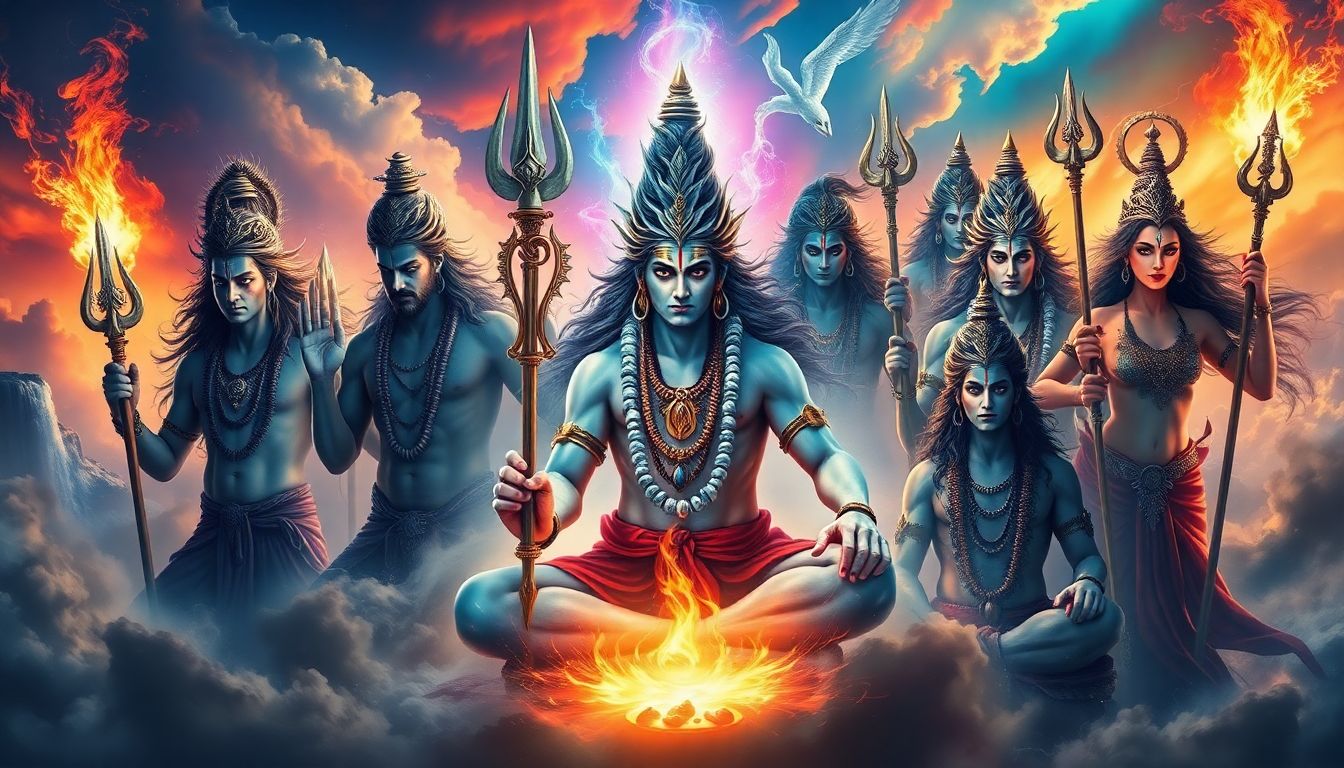
Unveiling the Countless Avatars of Lord Shiva: Exploring the Diverse Manifestations of the Destroyer
The tales of Lord Shiva embody a transformative power that captivates many. One famous story tells of how Shiva, in his formidable Rudra form, consumes all negativity, transforming it into pure energy. This narrative highlights the essence of avatars in Hinduism—diverse manifestations of the divine that adapt to human needs and environmental demands. This article will investigate the various avatars of Lord Shiva, revealing their significance in Hindu culture and spirituality.
The Primary Avatars: Exploring the Major Manifestations
Understanding the Concept of Avatars in Hinduism
In Hinduism, avatars represent the physical embodiments of deities on Earth. Each avatar serves a specific purpose or mission, reflecting the divine's concern for the world. Among Hindu gods, Lord Shiva stands out due to the multiple forms he has taken throughout history.
Shiva's Main Avatars
Sadashiva: Known as the eternal Shiva, Sadashiva embodies the ultimate reality and represents the unity of all aspects of existence. He is often depicted with five faces, symbolizing the five elements.
Maheshvara: Often called the "Great Lord," Maheshvara signifies Shiva as the giver of blessings and the source of all creations. His iconography typically includes a trident and a serpent.
Rudra: This fierce form of Shiva is known for his destructive capabilities. Rudra represents both terror and healing, reflecting the dualities of life.
Pashupati: As the lord of animals, Pashupati embodies compassion and care for all living beings. He is depicted with animals surrounding him, emphasizing his nurturing nature.
The Significance of the Primary Avatars
The primary avatars of Shiva play essential roles in various Hindu scriptures. They emphasize the processes of creation, preservation, and destruction. Each avatar reflects different aspects of life, demonstrating the complexity of existence and the divine’s influence on it.
Lesser-Known Avatars: Delving into the Hidden Forms
Unveiling the Obscure
Shiva has many lesser-known avatars that possess unique attributes. For instance:
- Bhairava: A fierce and protective form that removes obstacles and grants liberation.
- Aashutosh: Known for fulfilling wishes quickly, representing Shiva's benevolent aspect.
Regional Variations
Different regions of India celebrate distinct forms of Shiva. For example, in South India, MahaSaraswati is revered as the goddess of learning in association with Shiva, while in parts of North India, Nilkantha, who drank poison to save the universe, holds significant importance.
The Significance of Regional Variations
These regional interpretations showcase the local culture and history. They create unique rituals and celebrations that keep the essence of Shiva alive in diverse ways, enriching the Hindu tradition.
The Symbolic Significance of Shiva's Avatars
Symbolism and Iconography
Shiva's avatars share common symbolic elements. The trident represents the three gunas (qualities) of nature, while the crescent moon signifies the cyclical nature of time. These symbols remind devotees of the deeper meanings behind each form.
The Destruction and Renewal Cycle
Shiva's avatars embody the cycle of destruction and renewal, essential for growth and transformation. They teach devotees that endings pave the way for fresh beginnings—a vital life lesson.
Spiritual Lessons from the Avatars
By understanding Shiva's forms, we can derive valuable insights. Each avatar offers guidance on navigating life’s challenges, encouraging balance, fostering compassion, and embracing change.
Shiva's Avatars in Different Texts and Traditions
Scriptural References
Shiva’s avatars are well-documented in various texts, including the Puranas and the Upanishads. These scriptures portray his different forms, enriching the reader’s understanding of his divine role.
Regional and Sectarian Differences
Different sects interpret Shiva’s avatars uniquely. Shaivites, for instance, emphasize specific forms over others, showcasing the diverse beliefs within Hinduism.
Modern Interpretations
In contemporary discussions, many view Shiva’s avatars as symbols of personal development. They inspire individuals to embrace their unique journeys and transformations.
Practical Application: Integrating Shiva's Avatars into Daily Life
Meditation and Visualization
Meditating on Shiva's avatars can help individuals connect with various aspects of their lives. Visualizing these forms fosters inner peace and balance.
Connecting with Divine Energy
Focusing on specific attributes of Shiva’s avatars can help individuals access divine energy. For example, contemplating Sadashiva can inspire unity and harmony.
Applying the Lessons to Modern Life
The avatars of Shiva teach practical life lessons. Embracing change, being compassionate, and seeking balance are essential takeaways that apply to our daily experiences.
Conclusion
Understanding the numerous avatars of Lord Shiva reveals a vast and intricate world within Hinduism. Each form holds significance, offering insights into life, spirituality, and the divine. As we explore these avatars, we uncover timeless teachings that resonate deeply in contemporary society. The relevance of Shiva's avatars transcends time, guiding us in our quest for knowledge and understanding in this complex world.